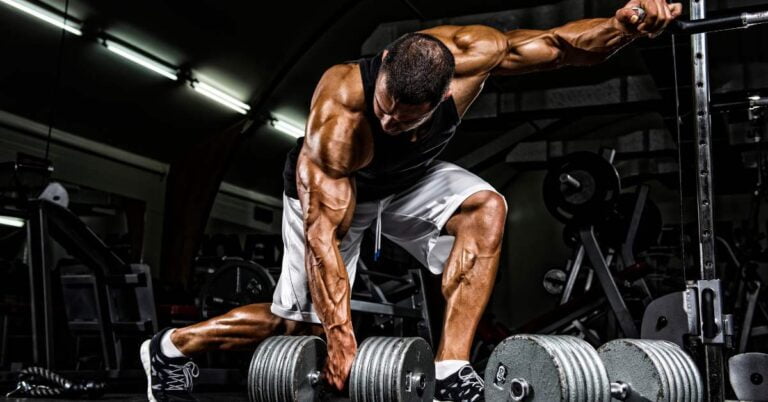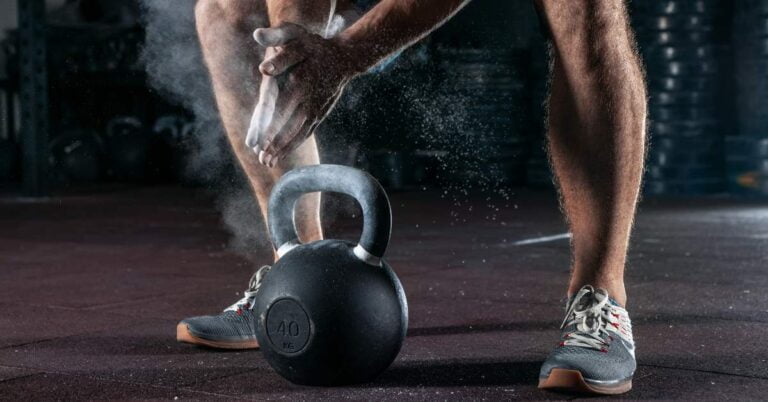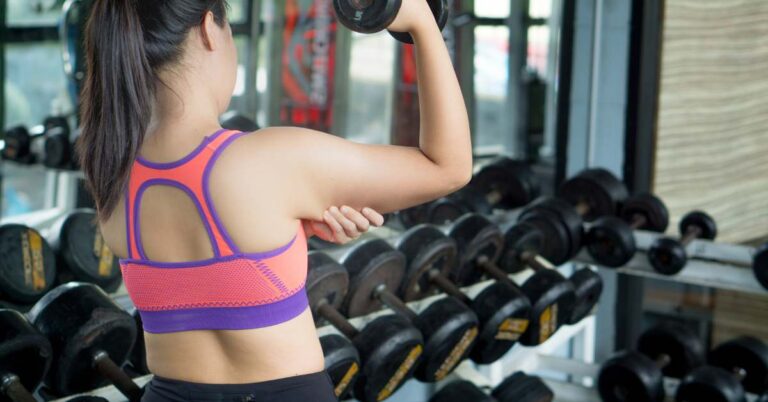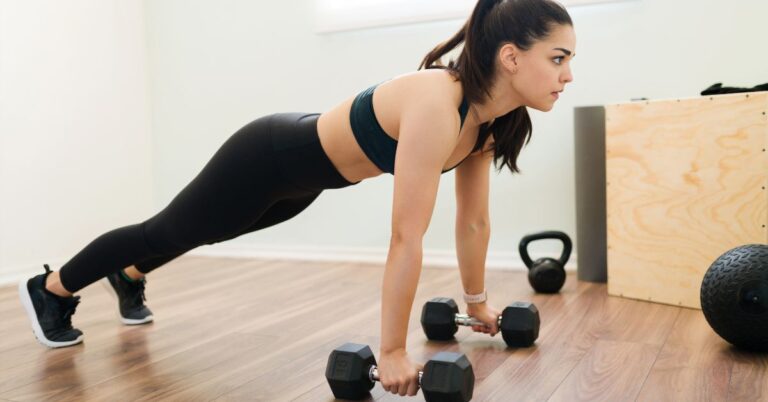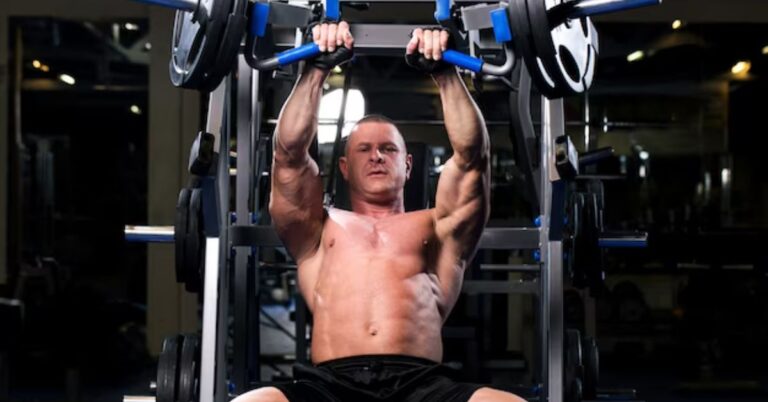Power Tower Workout: Strengthen Your Body with Versatile Training
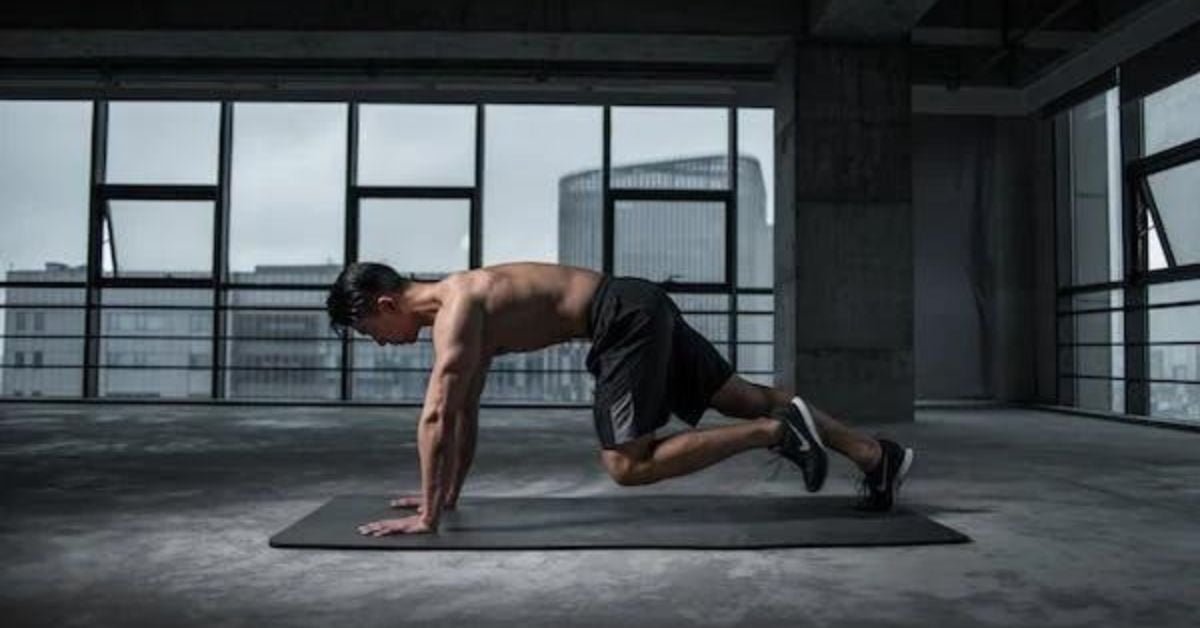
Power towers have gained significant popularity as versatile workout equipment in the fitness world. A power tower workout is a standalone equipment that helps you exercise using your body weight. It helps strengthen and tone your muscles.
This article explains power tower workouts, their benefits, exercises you can do, and how to create an effective routine. Get ready to elevate your fitness journey with the power tower workout!
Understanding Power Tower Workouts
Power tower workouts are a form of bodyweight training that utilizes specialized equipment designed to target multiple muscle groups simultaneously. These towers have a strong frame with bars and handles. You can do exercises like pull-ups, dips, and knee raises. Power towers are great for strengthening the upper body, core, and lower body, making them versatile.
Also See: 10 Best Dumbbell Squats to Build Muscle & Strength
Benefits of Power Tower Training
Power tower workouts offer numerous benefits for your physical and mental well-being. Here are some key advantages:
Strength Development: Power tower exercises engage multiple muscle groups, promoting overall strength development.
Muscle Definition: Regular power tower training can help sculpt and define your muscles, leading to a toned physique.
Functional Fitness: Power tower workouts mimic real-life movements, improving your functional fitness and making daily activities easier.
Convenience: Having a power tower at home can save time and money. This is because it provides a complete workout station, eliminating the need for a gym membership.
Space Efficiency: Power towers are compact and occupy minimal space, making them suitable for various living environments.
Affordability: Compared to purchasing individual gym equipment, power towers offer a cost-effective solution for a full-body workout.
Essential Power Tower Exercises
Let’s explore some of the fundamental exercises you can perform on a power tower:
1. Pull-Ups: Strengthen Your Upper Body and Grip
Pull-ups are highly effective for improving grip strength and developing upper body muscles. Use your back muscles and arms to lift your body above the pull-up bar on the power tower. Make sure your chin is above the bar. Here’s how to perform pull-ups with proper form:
Start by hanging from the pull-up bar, ensuring your arms are fully extended, and your body is straight.
Engage your core by contracting your abs and keeping your legs straight and tightly together to prevent unnecessary swaying.
Pull yourself up using your back muscles and arms, driving your elbows down and back. Keep your shoulders in a pulled-back position throughout the movement.
Aim to bring your chin above the bar while maintaining control and avoiding excessive momentum.
Slowly lower yourself back to the starting position, straightening your arms and maintaining muscle tension.
It’s important to note that pull-ups can target different muscles depending on your grip width and type. A regular pull-up with a broader grip mainly targets your lats. Changing your grip can highlight other strengths, like the biceps or shoulders.
If you’re new and need to be more vital for pull-ups, there are different ways you can try instead. Assisted pull-ups with a band or chair can help you get stronger and eventually do pull-ups without assistance.
Remember, proper form and technique are crucial for maximizing the benefits of pull-ups and minimizing the risk of injury. Focus on engaging the target muscles and maintaining control throughout the exercise.
2. Chin-Ups: Strengthen Your Back and Biceps
Chin-ups are a powerful compound exercise that contributes to building a solid and broad back. Unlike pull-ups, chin-ups involve gripping the chin-up bar with a close, supinated grip where your hands face you.
Chin-ups focus on the biceps, not the back muscles. It’s an excellent exercise for working and strengthening your biceps. Here’s how to properly execute chin-ups:
1. Begin by gripping the chin-up bar with your hands shoulder-width apart, palms facing you.
2. Hang freely with extended arms, maintaining a straight body position.
3. Engage your core and use your back and biceps to pull your body up by driving your elbows down and back.
4. Continue pulling until your chin is above the bar, focusing on a controlled and smooth movement.
5. Slowly lower yourself back to the starting position, fully extending your arms and maintaining muscle tension throughout the exercise.
Use a resistance band or have a partner help you to make chin-ups easier. You can use a weight belt or hold a dumbbell between your feet to make it harder while exercising.
Remember to prioritize proper form and technique while performing chin-ups. This ensures that you engage the targeted muscles effectively and minimize the risk of injury.
Adding chin-ups to your power tower workout can strengthen your upper body, focusing on your back and biceps.
3. Dips: Strengthen Your Arms, Shoulders, Back, and Chest
To perform dips on the power tower dip station, follow these steps:
1. Hold the bars with straight arms and bent knees, and tighten your abs by engaging your core.
Bend your elbows and lower your body slowly, keeping control and avoiding swinging your legs.
3. Pause briefly at the bottom, then return to the starting position by straightening your arms.
Dips are a compound exercise that engages various muscles, including your arms, shoulders, back, and chest. Here are some tips to modify the exercise based on your specific goals:
Chest Dips: You should do a few things to work your chest muscles during dips. First, lean forward slightly. Next, spread your elbows out. Finally, concentrate on squeezing your chest at the highest point of the exercise.
To focus on your triceps, you should squeeze them at the top. Additionally, keep your body straight and your elbows close. Finally, make sure to straighten your arms fully.
It’s essential to warm up your elbows properly before performing dips to reduce the risk of injury. Additionally, avoid swaying or using momentum during the exercise to maintain proper form and maximize effectiveness.
For beginners, assisted dips or a resistance band can make the exercise more manageable while maintaining proper technique. Advanced athletes can add extra challenge and resistance by incorporating a kettlebell, weighted vest, or dip belt.
Remember to listen to your body and progress at a pace suitable for your current fitness level. Consistency and proper form are crucial to achieving optimal results and minimizing the risk of injury.
4. Knee Raises: An Effective Power Tower Exercise for Strong Abs
The Captain’s Chair, also called the knee raise station, is an excellent exercise for working the abs. When performed correctly, it can activate the abs up to 212% more effectively than traditional crunches without relying on momentum.
To execute Captain’s Chair leg raises with proper form, follow these steps:
1. Stand straight, positioning your back against the padded vertical panel of the power tower. Allow your legs to hang freely.
2. Bend your arms at a right angle. Place your forearms on the padded bars. Hold the handles tightly for support.
3. Initiate the movement by lifting your legs slowly and controllingly, ensuring no swaying or swinging.
4. Continue lifting your legs until they are parallel to the floor, with your knees bent.
To maximize the activation of the rectus abdominis and enhance the effectiveness of the exercise, you can implement the following technique:
· Raise your knees towards your chest or shoulders, fully flexing your hips. At the top of the movement, slightly tilt your upper body forward to engage the abdominal muscles further.
You can effectively target and strengthen your abs by performing Captain’s Chair leg raises. Focus on maintaining proper form, engaging your core, and avoiding excessive swinging or momentum.
Incorporating this exercise into your power tower workout routine will build strong abdominal muscles and improve core strength.
5. Push-Ups: A Vital Component of Your Full-Body Power Tower Workout
Full-body calisthenics or power tower workouts would only be completed by incorporating push-ups in various forms. Bodybuilders and athletes from other disciplines rely on push-ups to strengthen their chest, triceps, and shoulders and enhance core stability.
To perform push-ups on the power tower, follow these steps:
1. Position the dip handles at a low height or utilize the two low parallel handlebars commonly found on power towers. This configuration helps alleviate pressure on your wrists and allows for a deeper range of motion, effectively stimulating your muscles.
2. Grab the handholds with a neutral grip and assume a low-incline position.
3. Lower your body by bending your elbows to bring your chest as close to the handles as possible. Maintain control throughout the movement.
4. Push yourself back up to the starting position by extending your arms, focusing on engaging the targeted muscle groups.
In addition to the low incline variation, there are other types of push-ups you can incorporate into your routine:
Decline Push-Ups: Elevate your feet on an elevated surface, such as a bench or step, to increase the difficulty and target the upper chest and shoulders.
If you need to be stronger, you can do knee push-ups. They are a modified version that puts less strain on your upper body. However, they still work the muscles you want to target.
Remember to maintain proper form and control throughout each repetition. By incorporating push-ups into your power tower workout, you’ll develop upper body strength, improve muscular endurance, and enhance overall fitness.
Building Your Power Tower Workout Routine
To create an effective power tower workout routine, consider the following tips:
Warm-Up: Start your workout with a short intro, including dynamic stretches and light cardio to prepare your body for training.
Exercise Selection: Choose a variety of exercises that target different muscle groups to ensure a balanced workout routine. Include compound movements like pull-ups and dips and isolation exercises like knee raises.
Repetition and Sets: Perform each exercise for a specific number of repetitions and complete multiple sets according to your fitness level. Gradually increase the intensity and challenge as you progress.
Rest and Recovery: Allow adequate rest between sets and exercises to avoid overexertion and promote muscle recovery.
Progression: Regularly challenge yourself by increasing the difficulty of exercises, adding resistance, or incorporating advanced techniques like plyometrics or isometric holds.
Stretching and Cool-Down: Conclude your workout with stretching exercises and a cool-down period to aid muscle recovery and reduce post-workout soreness.
Progression and Advanced Techniques
As you become more proficient in your power tower workouts, consider incorporating these progression and advanced techniques:
Weighted Exercises: Add additional weight using a weight vest or a dipping belt to increase the resistance and further challenge your muscles.
Plyometric Training: Incorporate explosive movements like plyometric push-ups or jumping knee raises to enhance power and explosiveness.
Isometric Holds: Pause at specific points during an exercise to engage your muscles isometrically, intensifying the workout and promoting muscular endurance.
L-Sits and Muscle-Ups: Once you’ve built sufficient strength, aim to master advanced movements like L-sits and muscle-ups, which require a high level of core and upper body strength.
Nutrition and Hydration for Optimal Performance
Pay attention to your nutrition and hydration to support your power tower workouts and overall fitness goals. Consume a well-balanced diet that includes lean proteins, complex carbohydrates, healthy fats, and abundant fruits and vegetables. Stay hydrated properly by drinking sufficient water throughout the day, especially during and after workouts. Consult with a registered dietitian or nutritionist to personalize your nutritional needs based on your goals and individual requirements.
Injury Prevention and Safety Tips
While power tower workouts can be highly effective, it’s essential to prioritize safety and injury prevention. Here are some essential tips to keep in mind:
Proper Form: Maintain appropriate form and technique for each exercise to minimize the risk of injury. If you need clarification on a particular exercise, seek guidance from a qualified fitness professional.
Gradual Progression: Progress gradually, allowing your body to adapt and strengthen over time. Avoid overexertion and listen to your body’s cues.
Warm-Up and Cool-Down: Always warm up before workouts and cool down afterwards to reduce the risk of muscle strains and other injuries.
Rest and Recovery: Incorporate rest days into your training schedule to allow your muscles and connective tissues to recover and rebuild.
Use Spotters: When attempting advanced movements or heavy-weighted exercises, consider using a spotter to ensure your safety and provide assistance if needed.
Frequently Asked Questions (FAQs)
Can anyone do power tower workouts?
Power tower workouts can be adjusted for different fitness levels. Beginners should begin with simple exercises and gradually move on to harder ones.
How often should I do power tower workouts?
Aim for 2-3 weekly sessions, allowing at least one day of rest between workouts to promote recovery and avoid overtraining.
Can power tower workouts help with weight loss?
Power tower workouts can contribute to weight loss by increasing overall calorie expenditure and promoting muscle development.
What if I can’t do a full pull-up or dip yet?
Modify the exercises to suit your current strength level. For pull-ups, you can use resistance bands or perform assisted pull-ups by placing a chair under your feet. Try using a bench or elevated surface for dips to decrease the difficulty.
Can power tower workouts replace traditional gym equipment?
While power towers offer versatility, they may only partially replace traditional gym equipment. However, they provide a cost-effective and space-efficient option for various exercises.
Conclusion
The power tower workout is an excellent choice for individuals seeking a versatile and effective training method. You can work on many muscles, strengthen, and reach your fitness goals through different exercises and other techniques. Remember to prioritize safety, maintain proper form, and personalize your workout routine based on your fitness level and objectives. Embrace the power tower and witness the transformation of your body and mind.









